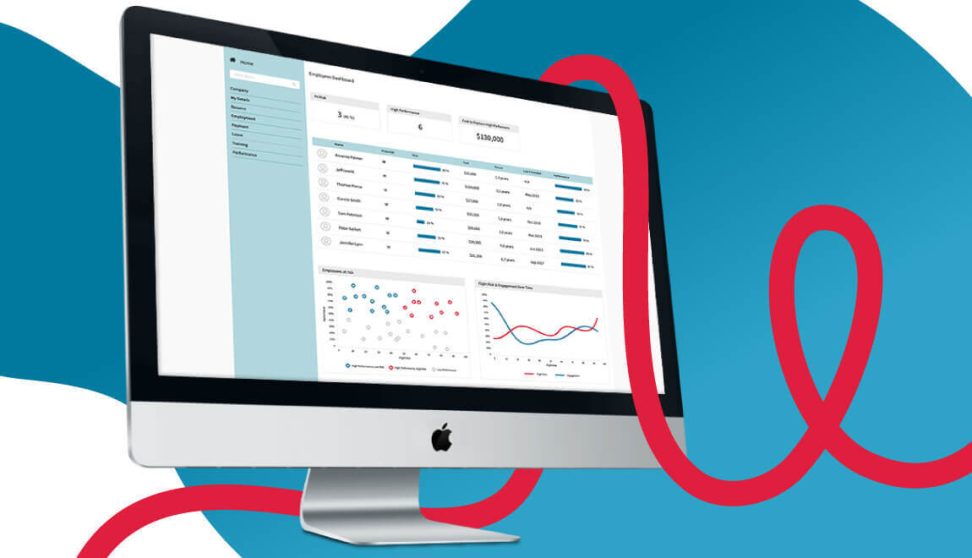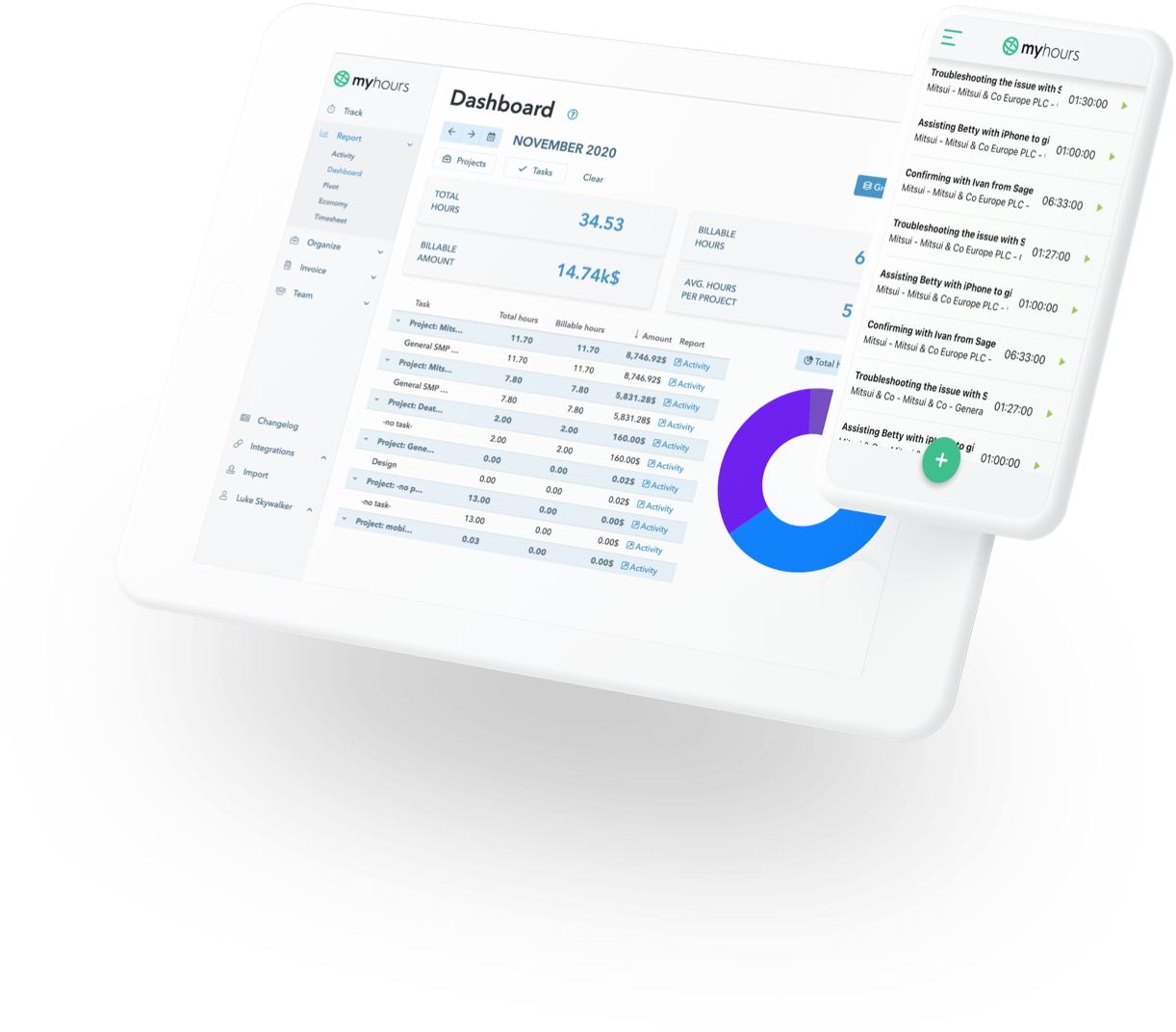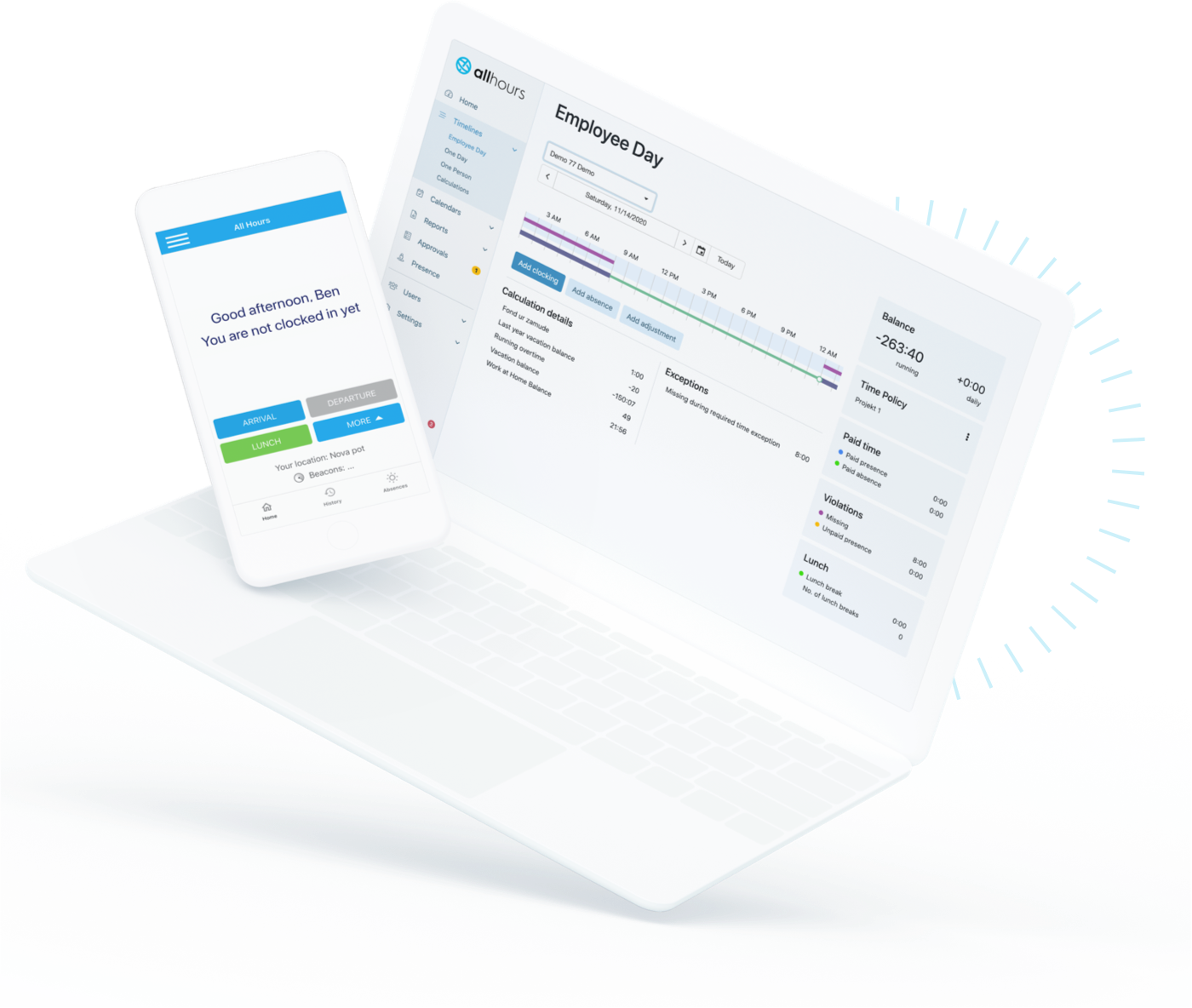HR Analytics: Merging the power of people and the power of data

HR analytics is on the rise on company agendas worldwide. "Trusting your gut on people issues turns out to be a bad idea. Analytics on your workforce is the most rapidly-growing field of analytics,” stresses Thomas H. Davenport from Babson College.
Moving beyond intuition calls for empirically proven data –i.e., big-data!
According to McKinsey, artificial intelligence and other advanced analytics will unlock $9.5 trillion to $15.4 trillion annually. Data-driven decision-making in HR is not only part of this trend - it is central to the future of HR.
Jonathan Ferrar, a respected business advisor in workforce analytics, defines analytics as such: Analytics is the discovery, interpretation, and communication of meaningful patterns in data to inform decision-making and improve performance.
In this blog, we will discover the potential of people analytics, answer questions on why and how to use HR analytics to drive business performance, and finally, as people analytics has become so imperative to HR, what the skills are that HR-data scientists need.
- Data-Driven HR: leverage the value of the vast amount of data
- Why are organizations experiencing a growing demand for HR analytics?
- 1. The “Prove it to me!” issue
- 2. Gaining a competitive edge
- 3. Pressure to reduce costs
- 4. Easier reporting
- Data is the new currency, including HR data
- What does it take to be a good HR Data Scientist?
- 5 steps to get started with people analytics
- Data-Driven HR: How to Use Analytics and Metrics to Drive Performance
- 1. Invoke curiosity
- 2. Put in the right context
- 3. Stories are just data with soul
- 4. Be patient
- 5. Choose the best technology for your analytics needs
- What kind of HR analytics can you get from time and attendance and project time tracking software?
- Beyond Money
Data-Driven HR: leverage the value of the vast amount of data
HR has been traditionally seen as a purely people-oriented function unconcerned with numbers - but things are changing.
As Bernard Marr, expert on the intelligent use of data in business, observes; it is “now uniquely placed to use company data to drive performance, both of the people in the organization and the organization as a whole.”
The case for HR analytics is compelling. Numerous studies suggest it drives better business performance, while simultaneously improving employee experience and well-being.
The most common metrics tracked by HR analytics are employee profiles, such as revenue per employee, training expenses, and demographic data, absenteeism, retention, time to hire, salary and promotion history, etc.
There are many data points that can be measured, the only challenge being that sometimes this data is vast and disconnected, and if it is not interpreted and communicated correctly, it may not serve as a reliable measure.
This is where the data scientist can play a meaningful role.
Why are organizations experiencing a growing demand for HR analytics?
More and more companies are turning to analytical approaches to help inform decisions. When it comes to HR, this turnover solves a bunch of issues.
1. The “Prove it to me!” issue
HR and its linkages to business results are very difficult to quantify. Often this is not a quick, cause-and-effect relationship.
But, on the other side, leaders want to see the impact of the money and energy they invest on talent and HR. With HR Analytics, this may not take the “standard ROI form”, however it helps massively when the benefits to an organization are shown in a data-driven way.
Boards requested more human capital reporting, according to a survey our Human Capital Investment and Reporting Council conducted earlier in the year, including these top metrics:
- total turnover rate (79.3%),
- diversity rate (58.6%),
- engagement/culture scores (51.7%).
Other key disclosure trends included:
- employee demographics (93%),
- employee lifecycle (68%),
- total rewards (56%),
- and safety (42%), according to PWC.
2. Gaining a competitive edge
In environments where it is believed that decisions made empirically bring better results, workforce analytics is perceived as a cutting-edge approach, enabling top-talent selection and shaping the environments in which they perform well.
“Workforce analytics is viewed as one element of an over-all analytical mind-set characterizing the firm,” says Ferrar in his book The Power of People.
3. Pressure to reduce costs
Especially in companies that are not as profitable as they need to be, there is a greater appetite for change.
In these cases, the CEO usually approaches the HR manager first, with a less-than-pleasurable task: contribute to profitability or reduce the level of workforce cost.
An analytical approach, alongside more traditional HR practices, is helpful when solving this issue.
4. Easier reporting
The era of greater transparency, reporting, and disclosure of non-financial and human-capital data has arrived.
Intangible assets in the S&P 500 (of which human capital is a critical part) are now responsible for 90% the index’s value, up from a mere 17% in 1975. It’s never been more important to measure and manage the value that people create, and investors are pushing for such critical information.
Demand for people analytics is also a consequence of the need to give solid ground to regulatory bodies about the value of certain human capital metrics during a company’s annual reporting (for example, attrition, employee engagement, and salary ratios).
Data is the new currency, including HR data
According to Nucleus Research, for every dollar invested in people analytics, organizations receive a return of $13.01. Why?
It allows HR teams to significantly streamline processes that reduce costs and attrition, and consequently improve the bottom line through insights into productivity, cost optimization, or revenue enhancement.
Particularly nowadays, offering flexible schedules and a good work-life balance are moving higher and higher in companies’ agendas. With the help of human resource analytics, it can be done faster.
By analyzing data such as absenteeism rate, overtime hours, training costs, and employee productivity, and calculating hiring costs and identifying patterns in employee turnover, CEOs can improve overall employee experience, stimulate productivity, and, ultimately, reduce HR and general business costs.
In the beginning, HR analytics was focused on tracking basic HR metrics or providing reports to managers on headcount and attrition. Nowadays, people analytics teams are using data to understand every part of how people impact a business’s value and operations.
People analytics culture is positively associated with overall business performance: 65% of those who said they work in an organization with a strong people analytics culture reported their business performance as strong when compared with competitors.
But only 32% of those in weak analytics cultures reported strong business performance.
What does it take to be a good HR Data Scientist?
The head of people analytics (also referred to as the people-science team, or workforce analytics department) is the key evangelist and visionary for data-driven decision-making and ensures that the use of people analytics always delivers values to the business.
It is a multi-dimensional job, requiring many different “hats” to be worn.
One should demonstrate robust data science skills, but at the same time be able to actively listen and have strong non-technical communication skills such that business leaders are able to fully understand the meaning and implications of results.
According to Ferrar, there are Six Skills for Success in people analytics: Business Acumen, Consulting, Human Resources, Work Psychology, Data Science, and Communications. If you are given this responsibility in your organization, knowing where to begin can be difficult.
You need a vision, and you need a mission.
Perhaps your vision regarding HR analytics might be written like:
- Better business through better people decisions.
- HR makes evidence-based people decisions using data and analytics.
- Market leadership through human capital management analytics and planning
And your HR analytics mission examples could be the following:
- Building a human capital analytics organization to enable deep and innovative data mining to support business decisions and maximize shareholder value.
- Building the infrastructure to sustain and provide workforce analytics, with the aim of creating a data-driven culture that allows our business leaders to make superior decisions.
- Working with the business as partners providing analytics solutions to business problems, therefore ensuring the company has the right skills at the right time to bring a competitive advantage.
- Providing workforce intelligence to HR and business executives so that, in turn, they know their people: who they are, what they do, how they do it, and what they need to succeed.
5 steps to get started with people analytics
The potential people analytics offers to help drive improvements in business outcomes, employee experience, and the impact of the HR function itself is enormous. But how can we start it right?
According to David Green, there are seven phases to getting started with people analytics. We have looked closely at some of them.
First, answer this question: What are the challenges keeping your CEO and board awake at night? Successful people analytics teams help solve business, rather than HR, challenges.
Think sales productivity, product quality, customer and employee retention and risk. This means understanding the business is an essential ingredient for good HR analytics.
Secondly, learn and grow. There is a lot of knowledge and a lot of cases available that can inspire you, expand your comprehension and ultimately help accelerate your HR analytics journey. Experiment with different solutions before choosing one.
Third, start small and focus on a quick win. Don’t be too ambitious too soon. Securing a quick win helps build momentum for people analytics within your company, but it also increases your chances of securing a bigger budget over time.
Fourth, even if you are data-scientist, don’t obsess about the date. Data collection, preparation, and hygiene will inevitably be the most arduous part of the process, but in itself it has no value, so, don’t obsess over it being perfect.
And, finally, try to get over the resistance of the team, get CHRO on your site, get access to more than just HR data, and show interest in solving concrete business problems - in short: get out of the HR bubble!
Data-Driven HR: How to Use Analytics and Metrics to Drive Performance
Although many people talk about using HR analytics to achieve better business results, few organizations successfully harness their data.
So, how can your organization benefit from all the insights possible in today’s “big data” world?
1. Invoke curiosity
The human race’s quest for information is never-ending and businesses and organizations are no exception. Curiosity is a hot topic and is considered a critical skill for knowledge workers today.
When our curiosity is triggered, we think more deeply and rationally about decisions and come up with more-creative solutions.
HBR reports that curiosity is linked to better job performance and communication, as well as increased creativity and innovation. Business leaders continually seek out knowledge regarding their organizations to gain insights from all the data that exist.
By doing so, they can make evidence-based decisions to improve their organization’s performance and gain a competitive advantage in the marketplace. HR analytics exists to meet this need.
2. Put in the right context
A little data in the wrong context is often worse than no data at all. It’s important to bring in contextual data in your people analytics projects.
Otherwise, you run the risk of stakeholders misinterpreting the results of your analysis, or not deriving any value at all. Strengthen the story with contextual guidance to bring a new depth and level of meaning to your analysis.
First of all, be sure to present findings in a way that is steeped in business context and connected to business value. Showing that employees have completed 50 hours of learning is data of no serious added value.
You have to connect the dots between learning hours and a clear impact on the business. Ask yourself if the learning hours have led to an increase in skills, and how those connect with the company’s betterment of services or product placement.
3. Stories are just data with soul
Apart from what is measured and analyzed, most important may be the story that is communicated to employees, investors, customers and other stakeholders around it.
Understanding people, functions, and groups; and communicating regularly, appropriately, and with clarity is a vital part of the job for experts in people analytics.
It is important to turn insights into compelling stories that will drive action and change. When presenting, do not overcomplicate things. Be nice to your audience; don’t make them spend too long figuring out the visual.
The main goal should be making sense of data by weaving it into compelling stories for your listeners. Keep in mind the importance of storytelling to demonstrate value!
4. Be patient
Shifting mindsets and achieving a culture which embraces utilizing Big Data for HR takes time. Even with fast progress, there are still cultural and technical barriers to overcome in order for HR functions to become data-savvy.
Predictive analytics is likely to take a minimum of 24 months to show meaningful results.
5. Choose the best technology for your analytics needs
Converting data (sometimes lots of data!) into usable results is not easy. There are some key features of good HR analytics solutions, which produce rigorous, fact-based insights about the human drivers of business results.
Data savvy, yet customer friendly, HR analytics solutions boast 4 characteristics:
- They answer the burning issues of C-suite and boards
- They are easily used by individuals who are not data scientists
- They are cloud-based
- They are supported with statistical analysis and machine learning technology
Time tracking, for example, is one of the questions keeping employees and managers awake at night these days. Due the outbreak of COVID-19, many companies were forced to ask their employees to work remotely.
COVID-19 has made it necessary to be "remote first", however, companies need to have the systems and processes in place for that new reality. HR analytics has a wide range of solutions to offer at this point.
Popular cloud based solutions based on the idea of getting the most out of your data are helping customers overcome time tracking issues, and making reporting and invoicing faster.
It has been proven that teams that are using those tools (like My Hours) are more productive, efficient, and organized.
What kind of HR analytics can you get from time and attendance and project time tracking software?
Time and attendance and project time tracking reports are also part of HR analytics. They can provide you basic HR analytics and are also a very good and easy way to start the process.
Some examples of metrics you can see in time and attendance software:
- Number of hours worked
- Employer costs per employee
- Overtime worked
- Outstanding vacation balances
- Number of absences for different reasons
- Illness by department or team and other variances by department
- Early birds and late comers
- Average clock-in and clock-out time
- Presence in a company in any particular moment
- Presence per location in any particular moment
- Time-allocation breakdown etc.
Some examples of metrics you can see in project time tracking software:
- All the projects a company is working on at any particular moment
- Spent time by project per employee/team
- Spent time by type of work
- Billable and non-billable hours
- Total time worked
- Planned and free team capacity
- Time spent on meetings
- Labor and other costs spent per project
- Expense reports per project, employee or team
Beyond Money
Demand from top executives for robust HR analytics is not solely revenue or profit driven. Indeed, the development of analytics in HR is sometimes born out of a desire to create a better workplace.
This process leads companies into the sweet spot at the intersection of profit and employee well-being.
The CEO of McBassi, for example, stresses that her professional goal is to create better measurement systems that help organizations create sustainable, profitable, and enlightened management of their people.
After all, we don’t want to quantify people in terms of euros. It’s just not the right thing to do.
We are talking about people, their power, and being empowered by data and technology. In that perspective, HR analytics is just one way of creating a world where companies are forces for good – worthy of employee devotion, trust, and support.










